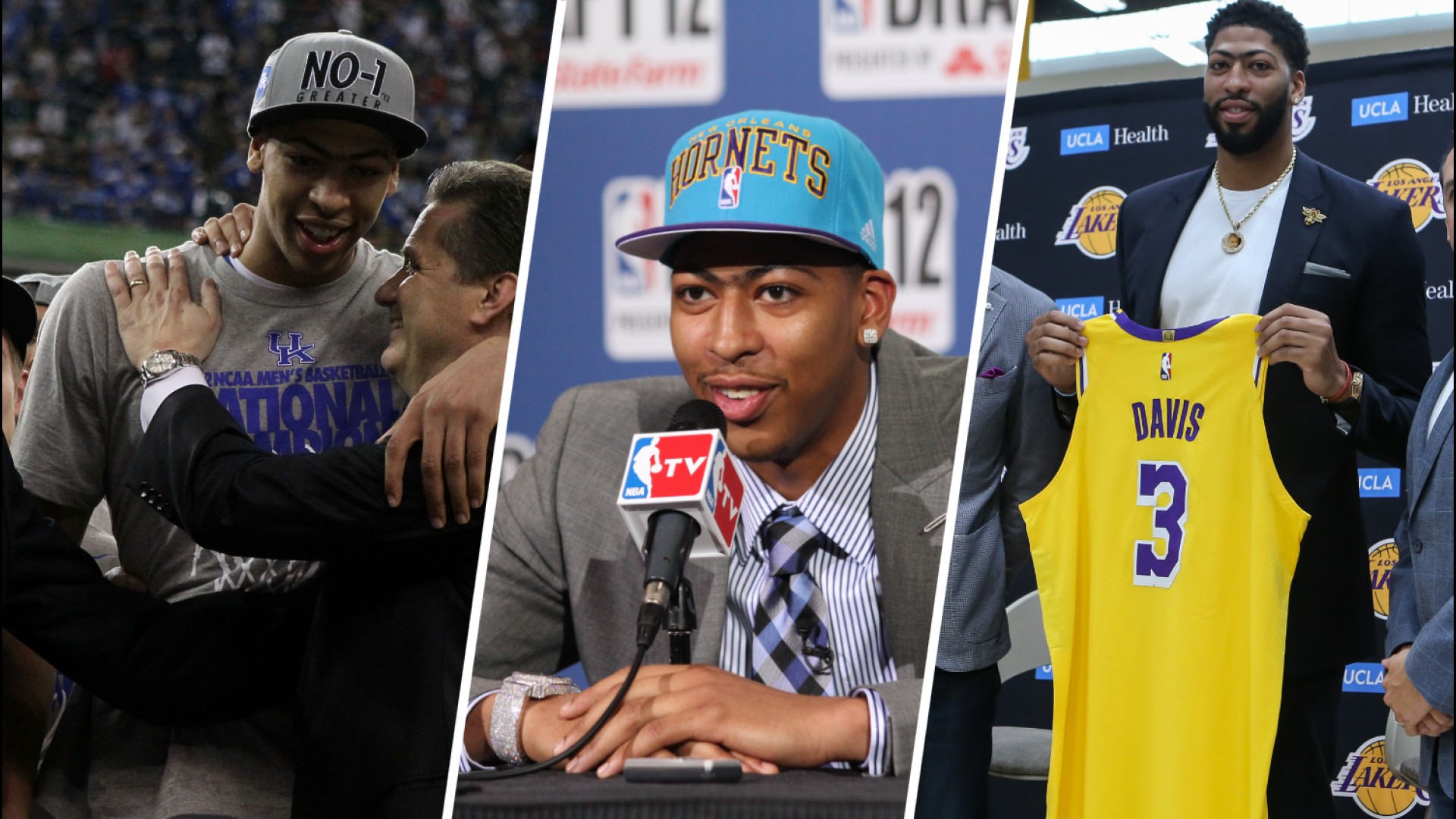
DeMarcus Cousins is an enormous human being.
He is listed at 270 pounds, making him one of the 10 heaviest players in a league of mountainous men. According to a recent CDC study, the average American male in his twenties checks in at 5-foot-9, 187 pounds -- a 6-foot-2 male is considered to be in the 95th percentile. Cousins is 6-foot-11, and nearly 100 pounds above the norm.
As Cousins returns from a ruptured Achilles on Friday night against the Clippers, the NBA world will be watching closely. How will he look? Will the Warriors play through him? How many minutes will he play? Will he be a liability? Will he be All-NBA again?
Those questions won’t be limited to just basketball people. The medical community will surely be keeping an eye on Cousins’ return simply because he is such a rare case study.
Even in the NBA, where the average height is 6-foot-7 and the average weight is 218 pounds, there aren’t many examples of players as large as Cousins returning to play at a high level. And if they are that large, they aren’t All-NBA players. And even if they were All-NBA players, they aren’t returning to a team looking to win a third straight championship.
What’s at stake isn’t just the Warriors’ chances at a three-peat. Cousins is a free agent this summer. The key to maximizing both may be one simple variable: Cousins’ weight.
News
Cousins’ weight and conditioning have been a talking point throughout his basketball career. At Kentucky, he was listed at 292 pounds by DraftExpress. He ballooned to 308 pounds by the end of the 2015-16 season, per Basketball Insiders’ Steve Kyler, before trimming down to 275 ahead of Team USA camp in the summer of 2016.
“He’s gotten in unbelievable shape for this,” Team USA coach Mike Krzyzewski said of Cousins that summer.
His weight again swelled during the 2016-17 season around the time of the blockbuster trade from Sacramento to New Orleans. That following summer, he wanted to shed some pounds, so he hired a new personal chef and dedicated himself to yoga.
“I kind of let myself go in the second half of the season last year,” Cousins told NOLA.com in August 2017. “I got in a place where I didn’t really want to be.”
Cousins lost a bunch of weight to prepare for the 2017-18 Pelicans’ up-tempo pace, though he didn’t specify how many pounds he lost, telling ESPN: “I don’t know. I really don’t know. I lost a lot of weight.”
The funny thing is, despite the obvious body transformations, Cousins’ weight never wavered in his team’s official media guides over the years. His weight was listed at exactly 270 pounds for every season -- in Sacramento, in New Orleans and now, in Golden State. Hardly anyone around the league believes that to be an accurate figure. Just like his teammate Kevin Durant’s height of 6-foot-9.
But Cousins’ weight will be critical during his return from the Achilles injury. According to proprietary research done by the Sports Medicine Analytics Research Team (SMART) and obtained by NBCSports.com, one factor stood out in NBA players’ ability to return to pre-Achilles-tear levels: Weight loss.
The study looked at 40 Achilles tears in the NBA and tracked each player’s performance after surgery. Some went well. More did not. But of the list of positive outcomes, all but one case was associated with weight loss.
It’s not clear how much weight Cousins lost during his Achilles rehab, if any. While there were a slew of articles detailing his weight loss during the 2017 offseason, that hasn’t been a focal point this time around. The Warriors’ media guide lists him at 270 pounds, the same as it was in Sacramento.
The post-Achilles study found that no players above 285 pounds were able to return to greater than 70 percent of their PER or scoring average after injury. No players above 285 pounds were able to play more than 66 percent of their games or have performance levels within 50 percent of their prior level.
“It certainly is a factor,” Dr. Ferkel told NBCSports.com. “The stress they’re putting on is a little different than for somebody who is a six-foot point guard. It probably extends the rehab a bit longer in bigger people than in smaller people.”
There’s a litany of cautionary tales for centers dealing with this injury, but former McDonald’s All-American center Stanley Roberts, Shaquille O’Neal’s 7-foot teammate at LSU and former first-round pick, is one of the more infamous examples. In December 1993, Roberts ruptured his right Achilles. Ten months after his surgery, Roberts showed up to Clippers training camp well over 300 pounds. Said then-Clippers GM Elgin Baylor: “He weighs too much, that’s what he weighs. You can quote that.” Three weeks later, Roberts ruptured his left Achilles tendon. He admirably fought his way back to play part of five seasons, but he played his last NBA game before turning 30 years old.
The injury also ended the career of the 300-pound Jerome James, who famously signed a five-year, $30 million contract with the Knicks in 2005 and dealt with weight and health issues throughout his New York tenure before tearing his Achilles in 2008. In 2011, DeSagana Diop, listed at 300 pounds, tore his Achilles at the age of 28 and played just 49 games thereafter. None of these giants were near All-NBA players at the time of injury, but they shared Cousins’ colossal size.
Why is weight loss such a strong predictor? It has to do with one devastating side effect of a torn Achilles: Calf atrophy. Because of the post-surgery immobilization, the calf muscle shrinks from the lack of exertion. Simply put, the smaller muscle often times can’t support the same weight as it did before the surgery. That imbalance is super tricky to manage. Studies have shown that even after seven years post-surgery, the calf muscle on the injured side of Achilles tears showed decreased strength compared to the non-injured side.
After a recent full-contact practice at Santa Cruz, Cousins was asked whether he was nervous about his Achilles holding up.
"No nervousness at all," Cousins told ESPN. "I'm more worried about pulling a hammy or something like that. It's been a while since I've played and reacted. The Achilles is the least of my worries."
Cousins’ nerves about other things being thrown off is a worthy concern. It’s exactly what happened to a star big man who suffered an Achilles tear about a decade ago.
* * *
Elton Brand is often cited as the closest Cousins comp. You’ve probably heard that Brand’s Achilles tear in 2007 derailed his career. Actually, you might have heard that directly from him, in a podcast interview with ESPN’s Marc Spears and Amin Elhassan.
“The most frustrating part was the injuries,” Brand said. “That Achilles really changed the trajectory of my career.”
At the time of his injury, the two-time All-Star was 28 years old and listed at 254 pounds, down from his 275-pound rookie weight. In Brand’s post-surgery April debut, he scored 19 points in 26 minutes off the bench, returning in about eight months, three months sooner than Cousins’ timetable. Brand averaged 17.6 points and 8.0 rebounds in the final eight games of the season, down from his pre-injury levels of 20.5 points and 9.3 rebounds. But, surprisingly, after adjusting for playing time, Brand’s per-minute averages in 2007-08 were nearly identical to his pre-surgery norm. After signing with the Philadelphia 76ers, Brand averaged an impressive 17.4 points and 10.3 rebounds in 18 games to kick off his tenure.
But in early December with the Sixers, Brand suffered a right hamstring injury against the Lakers, and two weeks later, he dislocated his right shoulder, which required season-ending surgery to repair a torn labrum. Then, after all those injuries, he was never the same again.
“That whole kinetic chain: Once you get the calf, it’s the ankle, the knee, the hips, the back,” Brand told ESPN. “No one’s really recovered from that Achilles injury and come back at the same level. I had a few serviceable seasons, but I wasn’t the same guy.”
It’s impossible to know how Brand would fare if he hadn’t busted his hamstring and then wrecked his shoulder. But those are certainly contributing factors to his post-surgery drop off and something to keep in mind while fortune-telling Cousins’ next few months.
Brand is just one example of a big man who struggled to regain his pre-surgery form. But it’s instructive to look at some possible potholes to avoid with Cousins. In Brand’s first full season after his Achilles tear, he played in both parts of a back-to-back in the second game and third game of the season. In the second night, after flying overnight from Philadelphia to Atlanta, Brand played 45 minutes. Yeah, it was a different league back then.
Sitting out the second half of a back-to-back was once considered taboo but not anymore. Team sources indicate that they haven’t discussed whether Cousins will play in back-to-backs this season, choosing to play it by ear. But it could be wise to sit him in those games. When Brand suffered his pulled hamstring on Dec. 3 against the Lakers, it was his third game in four nights. He played 41 minutes in the first game and 43 minutes in the second. In the third game, also the second night of a back-to-back, Brand came up limp halfway through the third quarter. He pulled his right hamstring, the opposite leg of his Achilles tear.
As good as Brand was, the Duke product was never quite the caliber of Cousins, who already has twice the number of All-Star appearances as Brand. Add the backdrop of a championship quest and this is uncharted territory.
Cousins is returning to a new team and a new, high-octane league. He will be suiting up for a Warriors team that is averaging 101.7 possessions per game, the 10th-highest pace factor in the league. That’s actually a tad faster than the Pelicans’ pace -- 100.6 possessions per game -- at the time of Cousins’ injury in late January.
Can Cousins play at that kind of pace? It’s a question that will be on Dr. Ferkel’s mind when he watches Cousins in person on Friday in Los Angeles.
“No. 1, how does he feel and look on the court?” Ferkel says. “How comfortable is he? How comfortable is he to keep up with the pace of the game?”
The Warriors have slowed down lately, perhaps in anticipation of bringing in Cousins. In the month of December, the team ranked second in fastest offensive possessions, pushing the ball at every opportunity, per Inpredictable.com tracking data. But in January, they’ve tapped the brakes down to eighth-fastest, most notably after turnovers, where the offense ranks below-average in speed. The Pelicans were demonstrably faster when Cousins hit the bench last season. The Warriors figure to follow suit.
In some ways, Cousins’ return couldn’t happen at a better time. The Warriors have a preposterous 130.1 offensive rating this month, and that’s before they add a guy who averaged 25.2 points last season before going down with his Achilles injury.
But Dr. Ferkel emphasized that what we’ll see on Friday isn’t the final product. In some ways, it’s the beginning.
“I think it’s important for people to understand that even if he’s released, we, as part of DeMarcus’ team, feel this current release [to play] is really the final phase of his rehabilitation. We’re not saying he’s 100 percent like he would be if he was uninjured. He’s done everything he can do but be in a game situation with elite players.”
After Cousins passed his conditioning tests, the final barrier to play, he was cleared to play for the champs. The wait is over. But for his long-term health, the weight watch has just begun.





